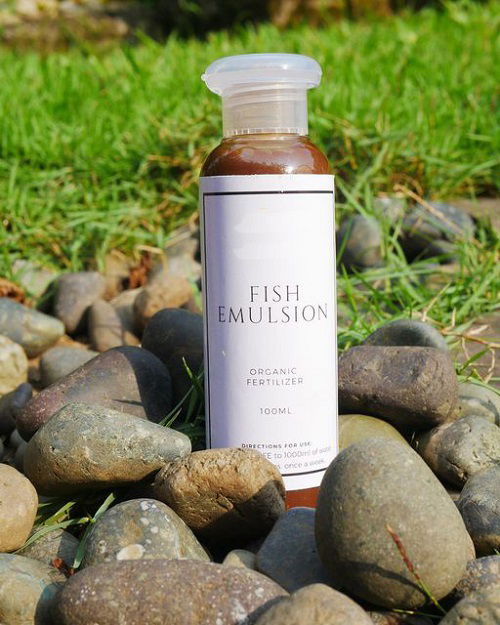When it comes to cultivating thriving cacti, enthusiasts often find themselves delving into the realms of organic fertilizers. Among the myriad of options available, kelp and fish emulsion have gained notoriety as dynamic duo fertilizers that can significantly enhance cacti growth.
These organic alternatives offer a plethora of benefits that go beyond mere nutrient supply. They are rich in micronutrients and hormones that not only promote healthy growth but also bolster cacti against environmental stressors.
In this exploration, we will delve into the distinct properties of kelp and fish emulsion, their multifaceted advantages, and how to effectively incorporate them into your cactus care routine.
Understanding Kelp: Nature’s Nutrient Powerhouse
Kelp, a type of large brown seaweed, is often overlooked as a fertilizer; however, its nutrient profile is nothing short of impressive. Rich in essential minerals and trace elements, it contains a natural assortment of nitrogen, phosphorus, potassium, and magnesium. These macronutrients play critical roles in plant health, supporting root development and leaf growth.
But what elevates kelp above the commonplace fertilizers is its substantial content of alginates and plant growth hormones, such as cytokinins and auxins. These compounds stimulate cellular division and elongation, promoting faster growth rates in cacti. For instance, cytokinins have been shown to help regulate the timing of leaf growth and to influence flowering, a crucial factor in ensuring that cacti reach their full blooming potential.
Moreover, the intrinsic properties of kelp foster improved water retention capabilities in the soil, an essential feature for cacti which prefer well-drained environments. When applied, kelp helps form a gel-like substance that holds moisture, ensuring that the plant’s root systems have consistent access to water, particularly during drier spells.
The Secret Behind Fish Emulsion: An Underestimated Gem
Fish emulsion, derived from the by-products of fish processing, often finds itself relegated to the sidelines of the gardening world. However, this organic fertilizer boasts a rich profile of nutrients, primarily nitrogen, but also including phosphorus and potassium. This composition makes it an excellent choice for promoting vigorous growth in cacti.
The beauty of fish emulsion lies in its rapid release of nutrients. When applied, it allows cacti to absorb essential elements swiftly. Unlike many slow-release fertilizers, fish emulsion can provide immediate nourishment, helping to catalyze growth during critical developmental stages. By providing readily available nutrients, it facilitates the quick recovery of stressed plants, ensuring a robust response in the face of challenges.
Adding to its appeal, fish emulsion is also a source of beneficial microbes. These microscopic organisms help enhance soil health, improving nutrient uptake and fostering robust root systems. A thriving microbiome is essential for cacti, especially when grown in containers or poorer soils, where nutrient availability can be lacking.
Synergistic Effects on Cactus Growth
Combining kelp and fish emulsion can amplify their individual benefits, creating a synergistic effect that encourages optimal cactus growth. When used together, they not only supply a comprehensive range of nutrients but also enhance each other’s effectiveness.
For instance, the growth hormones in kelp encourage the absorption of nutrients found in fish emulsion. Conversely, the rich nitrogen content of fish emulsion can help bolster the cellular processes stimulated by kelp. This powerful partnership ensures that cacti not only receive immediate nourishment but also benefit from long-term health and vitality.
Application Techniques for Optimal Results
Incorporating kelp and fish emulsion into your cactus care regimen need not be a daunting task. Both fertilizers can be applied in various forms, including liquids, granules, or powders. For cacti, liquid applications—either diluted or in concentrated forms—are particularly effective.
A general practice is to create a diluted solution by mixing one tablespoon of fish emulsion and one tablespoon of kelp extract with a gallon of water. This creates a nutrient-rich solution that can be used during regular watering.
Over time, administering this concoction every 4 to 6 weeks throughout the growing season can encourage lush, healthy cacti. Be cautious, however, as over-fertilization can lead to salt buildup, potentially harming the plants.
Incorporating these organic fertilizers may also mean adjusting watering strategies. Cacti generally prefer drier conditions, so balancing nutrient delivery with appropriate irrigation is key. Monitoring soil moisture and ensuring drainage can help maximize the benefits offered by kelp and fish emulsion.
Environmental Considerations and Sustainability
Embracing kelp and fish emulsion aligns with a sustainable approach to gardening. Both fertilizers are inherently organic and environmentally friendly, reducing the likelihood of chemical runoff that can harm local ecosystems. Kelp is often harvested from underwater forests, which helps maintain marine biodiversity, while fish emulsion utilizes parts of fish deemed waste, minimizing the environmental burden of disposal.
When these fertilizers are used appropriately, they contribute not only to the flourishing of cacti but also to the overall health of the gardening ecosystem. This aligns with the growing interest in sustainable gardening practices, showcasing that responsible choices can lead to vibrant plant health.
In conclusion, kelp and fish emulsion represent two of the most beneficial organic fertilizers available for promoting cactus growth. Their diverse nutrient profiles, unique growth-promoting properties, and environmental compatibility make them not just a choice, but an essential element for any cactus enthusiast dedicated to fostering robust and resilient plants. By acknowledging their distinct benefits and integrating them thoughtfully into your cactus care routine, you can embark on a journey towards cultivating healthier, more beautiful cacti, thriving in their natural beauty and resilience.





Leave a Comment